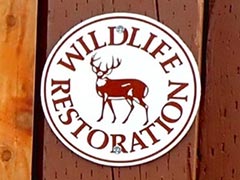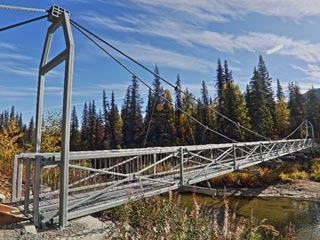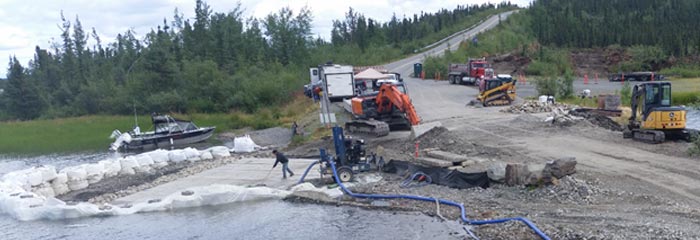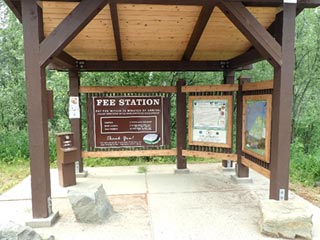Fishing and Hunting Access
Hunter Access
Grant Program Overview

The Federal Aid in Wildlife Restoration Act, often referred to as the Pittman-Robertson Act, provides funds to state fish and wildlife agencies and territories for wildlife management and research, and also funds projects to restore, conserve, and enhance wildlife populations and their habitats. Projects also include providing public use and access to wildlife resources, hunter education, and development and management of shooting ranges.
The Wildlife Restoration Program is the nation's oldest and most successful wildlife conservation program. In 1937, legislation created this "user pay/user benefit" program through federal excise taxes and import duties placed on firearms, ammunition, and archery equipment. The tax revenue collected is transferred to the US Department of Interior, Fish and Wildlife Service, which is the federal agency responsible for administering the Wildlife Restoration Program. The money is then apportioned to state fish and wildlife agencies through a formula based on land area and number of hunting license holders. State fish and wildlife agencies then make their own management decisions as to how the funds are utilized.

In Alaska, after the federal appropriation has been determined it's up to the legislature to authorize the amount of Wildlife Restoration funds that may be spent. The Alaska Department of Fish and Game (ADF&G), Division of Wildlife Conservation is the only entity permitted to receive and spend Pittman-Robertson funds apportioned to Alaska.
The Wildlife Restoration Program covers up to 75% of the cost of an eligible project and requires a 25% non-federal match. Match funds may be met through revenue from the sale of hunting licenses and tags or other funds. ADF&G also often partners with other state agencies, local governments, and non-governmental entities to meet match requirements and help control project costs.
ADF&G Division of Wildlife Conservation staff work with state and federal land managers, local governments, and the public to identify and facilitate design and construction of projects that develop and enhance access to wildlife resources for hunting, trapping, and other recreation. These projects are diverse and include building, improving, and repairing public use trails, roads, parking lots, campgrounds, boat launches, bridges, and more. Projects provide additional or improved opportunity and access to Alaska's lands for hunters and other recreational users.
Since 2016, Pittman-Robertson funds have been used to help construct more than a dozen Hunter Access projects on public land. Several have been completed, with more in various stages of design and construction.
Project Identification
Hunter access needs are assessed by Division of Wildlife Conservation staff for project validity, user benefit, local need, potential use, and cost/match availability. Proposals are ranked using established criteria (PDF 33 kB), including cost-benefit analysis, hunter/trapper interest, community support, and match availability. Proposals that rank the highest are prioritized based on funding availability.
Funding Restrictions

According to federal aid regulations, Wildlife Restoration grants are approved only if they provide for public use and benefit from restoration, conservation, management, and enhancement of wildlife resources, or the education of responsible hunters and archers. The grant opportunity described here is focused on funding projects that have a direct benefit to hunters and trappers, as well as access to public lands for hunters, trappers, and other wildlife-related recreation users.
Grant Program Application
Completed Hunter Access Projects

Listing of completed hunter access projects
In Progress Hunter Access Projects
Listing of in-progress hunter access projects
Hunter Access Project Map
Contact
For more information, contact Hunter Access Program staff at DFG.DWC.HunterAccess@alaska.gov.
Additional Resources
- January 2020 ADF&G Alaska Fish & Wildlife News: Hunter Access Program offers grant opportunities (article)
- May 2019 ADF&G Alaska Fish & Wildlife News: The Hunter Access Program (article).
- Information about the Office of Conservation Investment can be found on the U.S. Fish & Wildlife Service website.
- Information about the Wildlife Restoration (Pittman-Robertson) program can be found on the U.S. Fish and Wildlife Service website.
- Information about Alaska State Parks facilities can be found at the Alaska Department of Natural Resources, Division of Parks and Outdoor Recreation website.
- Information pertaining to legal public access to the state's land and water can be found here in the Legal Access section of the ADF&G website.
- ADF&G's Hunting, Trapping & Shooting information page.
- Thank you hunters, trappers and sport shooters for your support! (PDF 391 kB)
- Grant Program Poster (PDF 2,430 kB)
